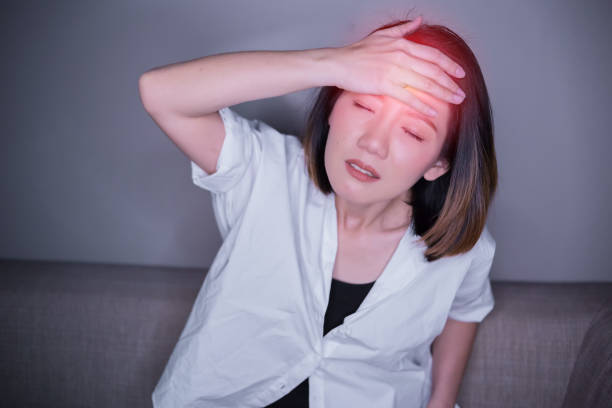The serious medical disease known as traumatic brain injury (TBI), which frequently results from an unanticipated hit or shock to the head, can have a major effect on a person’s life. The severity of TBIs varies, ranging from minor concussions to serious injuries with long-term effects. For better recovery results and early intervention, it is essential to comprehend the reasons, symptoms, and accessible treatment for a traumatic brain injury.
Causes Of Traumatic Brain Injuries
The causes of TBI are varied, reflecting the different scenarios in which the brain might experience sudden trauma. Common causes include:
- Falls: Accidental slips and falls are among the leading causes of TBI, particularly in older adults and young children. Whether from stairs, ladders, or uneven surfaces, falls can result in significant head injuries.
- Motor Vehicle Accidents: Collisions involving cars, motorcycles, or bicycles are a frequent source of TBIs, often due to the sheer force exerted during an impact.
- Sports-Related Injuries: TBIs are common in contact sports, including football, hockey, and boxing, where concussions are a common occurrence.
- Violence: Assaults, domestic abuse, or gunshot wounds can also lead to traumatic brain injuries.
- Explosive Blasts: Military personnel exposed to explosions or blasts may suffer TBIs, even without direct impact to the head.
Recognizing The Symptoms
The symptoms of TBI can vary significantly depending on the severity of the injury. Early recognition is essential for timely treatment. Symptoms are often categorized into physical, cognitive, and emotional effects:
- Physical Symptoms: Headache, nausea, dizziness, fatigue, and loss of balance are common physical indicators. Seizures or unconsciousness could happen in extreme situations.
- Cognitive Symptoms: Memory problems, difficulty concentrating, confusion, or challenges in making decisions are often seen in individuals with TBI.
- Emotional And Behavioral Symptoms: Irritability, mood swings, depression, or anxiety can manifest, sometimes compounding the recovery process.
For mild TBIs, symptoms such as headaches or temporary memory lapses might resolve within a few days or weeks. However, moderate to severe TBIs can lead to persistent and life-altering effects.
Diagnosis
Diagnosing TBI involves a combination of clinical evaluations and imaging tests. Medical professionals use physical examinations and incident-related interviews to determine the extent of the injury. To detect structural brain injury and keep an eye out for consequences like hemorrhage or edema, imaging methods like CT scans and MRIs are utilized. Physicians play a crucial role in diagnosing and managing Traumatic Brain Injuries, providing essential care that can significantly influence recovery outcomes.
Treatment Options
Treatment for TBI varies depending on its severity. Stabilizing the patient, halting additional harm, and encouraging healing are the main objectives.
- Immediate Care: For severe cases, emergency treatment focuses on maintaining oxygen supply, stabilizing blood pressure, and minimizing secondary damage to the brain.
- Medications: Drugs may be prescribed to reduce swelling, control seizures, or manage symptoms such as pain and mood changes.
- Rehabilitation Therapy: Rehabilitation is often a cornerstone of TBI recovery. Physical therapy can help restore mobility, occupational therapy aids in relearning daily activities, and speech therapy addresses communication challenges.
- Psychological Support: Emotional and mental health support is critical for coping with the behavioral and cognitive changes resulting from TBI. Counseling and support groups provide patients and their families with the necessary resources.
The Role Of Prevention
While TBIs are sometimes unavoidable, taking preventive measures can significantly reduce the risk of occurrence. These include following occupational safety regulations, fall-proofing homes for vulnerable people, wearing seat belts in cars, and donning helmets when playing sports or riding a motorcycle. Public education campaigns aimed at promoting safety awareness also play a vital role in preventing TBIs. For comprehensive care and expert guidance on traumatic brain injuries, South Valley Neurology provides specialized treatments to support recovery and improve quality of life.
Recovery And Hope
The recovery journey after a TBI is unique for each individual, depending on factors such as the injury’s severity, the timeliness of treatment, and the patient’s overall health. Significant progress has been made in improving the outcomes for TBI patients thanks to developments in medical research and rehabilitation methods. From cutting-edge imaging tools to innovative therapies, modern medicine offers hope for those navigating the challenges of brain injury recovery.
Support from family, friends, and healthcare providers is indispensable in this process. Encouraging a positive and adaptive outlook can significantly impact the quality of life during recovery.
Conclusion
Traumatic Brain Injuries demand attention not only for their immediate medical implications but also for their long-term impact on individuals and their families. By understanding the causes, recognizing symptoms early, and accessing effective treatments, recovery becomes achievable. Prevention remains the best strategy to minimize the incidence of TBI, but for those affected, a combination of medical intervention and supportive care can pave the way to a better future.




